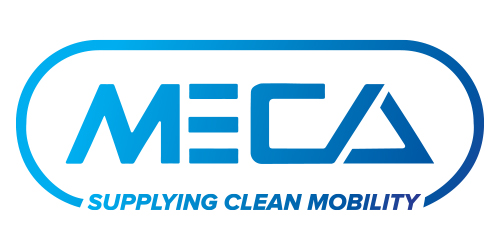Regulatory Background on the U.S. Mobile Source Emission Control Program
- Mobile Source Regulatory Comparison: U.S. EPA/California vs. European Union
- U.S. EPA Tier 3 and California ARB LEV III Rulemakings
- U.S. EPA Clean Air Nonroad Diesel Rule
- U.S. EPA 2007/2010 Heavy-Duty Engine and Vehicle Standards and Highway Diesel Fuel Sulfur Control Requirements
- U.S. EPA Light-Duty Tier 2 and Gasoline Sulfur Rulemaking
- The California Air Resources Board
- The U.S. Environmental Protection Agency's Motor Vehicle Compliance Program
- The Clean Air Act
The California Air Resources Board
Background and Regulatory Authority
California began to reduce its air pollution in 1955. The Bureau of Air Sanitation set the state’s first air quality standards which identified pollution levels that could endanger the health of some people. Recognizing cars and trucks as a major cause of smog problems, the state formed the Motor Vehicle Pollution Control Board in 1960 to regulate tailpipe emissions. By 1967, a year before emission controls were adopted for cars in the rest of the country, over 1.5 million California cars had been equipped with pollution control technology. In 1968, two years before Congress established the EPA, the two California air quality agencies were combined to create the Air Resources Board (ARB). Since then, in conjunction with county and regional air pollution control agencies, the ARB’s program has evolved into one of the most comprehensive air quality efforts in the world.
In recognition of the fact that California had the nation’s most serious air pollution problems and had implemented a motor vehicle emission control prior to the 1970 Clean Air Act Amendments, Congress granted the State the unique authority to adopt its own mobile source emission control standards. The standards must be in the aggregate at least as stringent as the standards adopted by the U.S. EPA. California has served as an important “proving ground” for regulatory initiatives and the application of new emission control technologies that in turn often have served as a model in fashioning elements of the U.S. mobile source emission control program. While other states may not adopt their own emission standards, those states with unhealthy air may elect to adopt California’s standards.
The Air Resources Board (ARB) consists of a governing board of 11 members (the “Board” appointed by the Governor. All members serve “at the pleasure” of the Governor. Board members serve part-time, except the Chairman, who serves full time. A large profession staff supports the activities of Board.
Rulemaking Process
ARB initiates rulemakings to establish standards and elements of its compliance program either in response to mandates or guidelines established by legislation passed by the state’s legislative body or as the result of a determination by the ARB that specific regulatory action is required to protect the public health
The rulemaking process begins when the Board directs the ARB staff to develop a regulatory proposal. In response the staff will develop a preliminary proposal, in consultation with interested parties – often public workshops will be held to discuss ARB’s concepts and to invite public comment. The next step is for ARB staff to develop a proposal together with a staff report explaining the rule and providing the justification and support of the rule. The public is given an opportunity to comment on the proposal and the staff report in advance of the public hearing at which the Board will consider these staff proposal. At the hearing, there is an opportunity for further public comment. At the conclusion of the public hearing, the Board will either adopt the rule as proposed, make modifications to the proposal, or direct the staff to conduct further analyses and return to the Board with a modified proposal. If a majority of the 11-member Board vote in support of the regulation, it is adopted.
